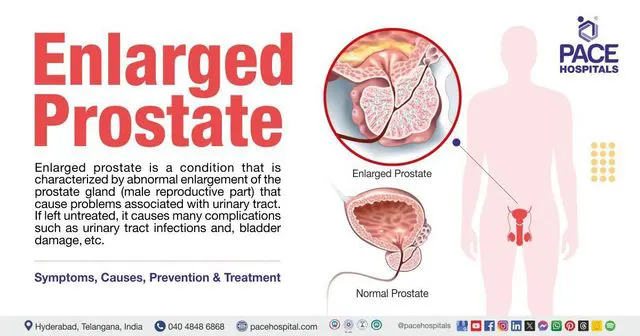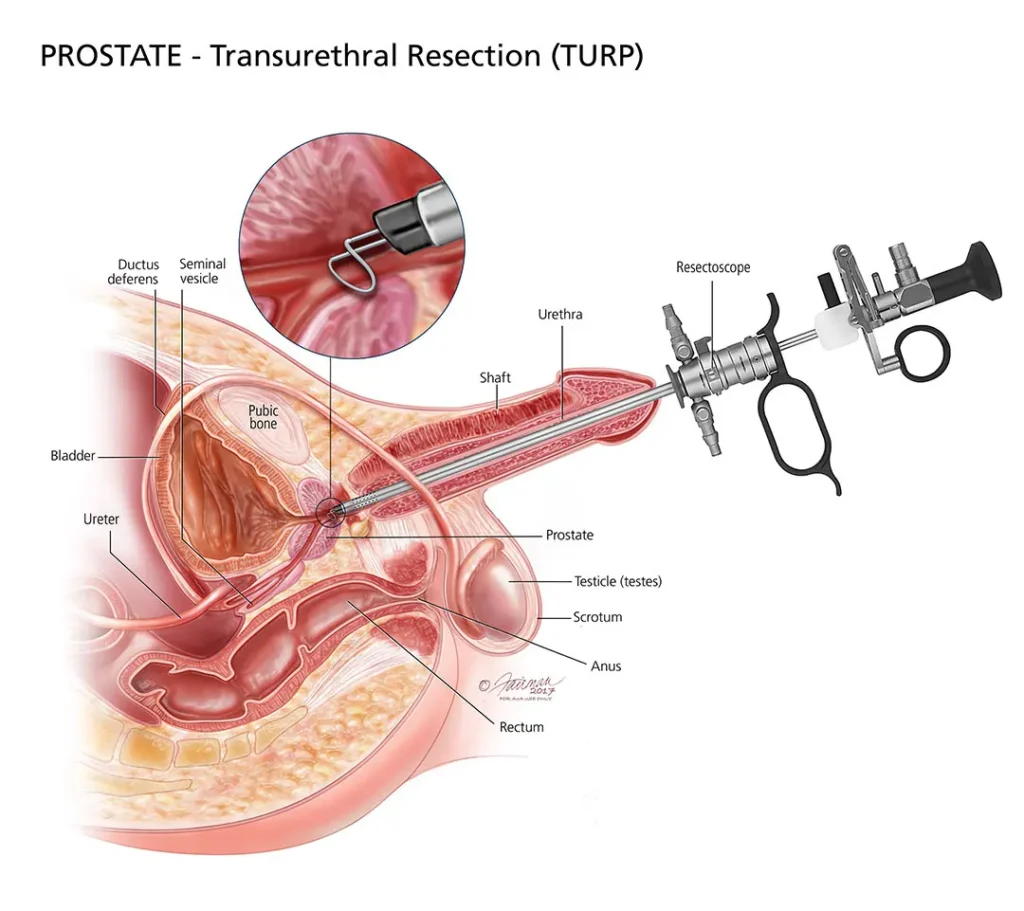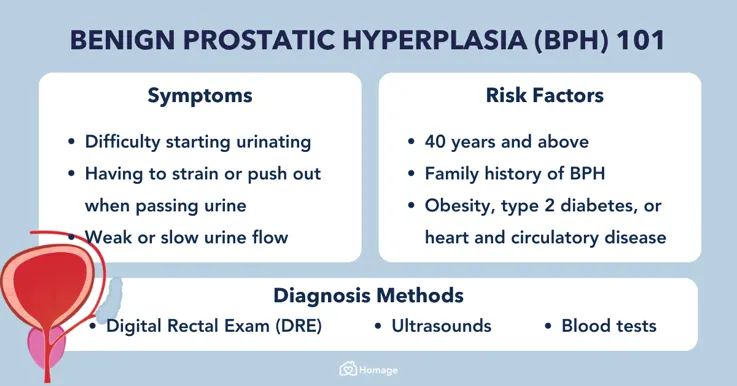What Is Benign Prostatic Hyperplasia (BPH)?
Benign Prostatic Hyperplasia (BPH) is a common condition in aging men where the prostate gland enlarges, squeezing the urethra and making urination more difficult. While BPH is not cancer, it can cause major urinary discomfort and interfere with daily life.
Common symptoms include:
- Frequent urination, especially at night
- Weak urinary stream or straining to start urination
- Feeling like the bladder doesn’t empty completely
- Sudden urgency or hesitancy to urinate
These symptoms are caused by mechanical pressure from the enlarged prostate around the urethra.

Traditional Treatment Options from Urologists
Urologists typically offer the following options, depending on severity:
- Medications
- Alpha blockers (e.g., tamsulosin): relax prostate and bladder muscles
- 5-alpha reductase inhibitors (e.g., finasteride): shrink the prostate over time
- Drawbacks: may take weeks to work, side effects like fatigue or sexual dysfunction, and often don’t work long-term
- Surgical Treatments
- TURP (Transurethral Resection of the Prostate): shaving prostate tissue through the urethra
- Laser ablation or Urolift: devices to remove or compress part of the prostate
- Drawbacks:
- Requires general or spinal anesthesia
- Risk of bleeding, incontinence, erectile dysfunction, or retrograde ejaculation
- Catheterization and longer recovery
Not ideal for men on blood thinners or with other surgical risks
How We Treat BPH at Vascular Clinic
At Vascular Clinic, we offer Prostatic Artery Embolization (PAE) — a nonsurgical, outpatient procedure that shrinks the prostate by blocking its blood supply. There’s no cutting, no general anesthesia, and no hospital stay for most men.
Prostatic Artery Embolization (PAE)
What it is: A catheter-based treatment that reduces prostate size and relieves urinary symptoms by cutting off the blood flow that keeps the prostate enlarged.
How it works:
- Performed under local anesthesia and light sedation
- A small catheter is inserted in the groin or wrist artery
- Using X-ray guidance, we target the arteries feeding the prostate
- We inject microscopic particles to block those vessels
- As blood flow is reduced, the prostate gradually shrinks
Typical Results:
- 30–40% shrinkage of prostate volume within 6–12 months
- Noticeable symptom relief begins within 2–4 weeks
- Full effect over 3–6 months
- Fewer nighttime bathroom trips, stronger stream, and better bladder emptying


Why Choose PAE?
- No incisions or cutting
- Performed as an outpatient—go home the same day
- Quick recovery – back to light activity within 24–48 hours
- Preserves sexual function – extremely low risk of erectile dysfunction or retrograde ejaculation
- Ideal for men:
- On blood thinners
- With high surgical risk
- Seeking a non-surgical alternative
And unlike surgical options, if for any reason PAE doesn’t provide enough relief, surgery can still be performed later. PAE doesn’t “burn bridges.”
What to Expect
Before the Procedure:
- We perform detailed imaging (e.g., CT angiography) to map your vascular anatomy
- Review your prostate size, symptoms, and medication history
- Coordinate with your urologist if applicable
During the Procedure:
- 1–2 hour procedure with conscious sedation
- Needle puncture access only—no surgical incision
- Performed in a specialized interventional suite
After the Procedure:
- Go home the same day
- Light activity within 24 hours
- Symptom improvement tracked with follow-up visits and imaging
- No catheter in most cases
- Low risk of side effects
Frequently Asked Questions
How does PAE compare to TURP or surgery?
PAE is less invasive, has a lower risk of side effects, and preserves future options. It’s ideal for men who want to avoid anesthesia, hospital stays, and sexual complications.
Is PAE permanent?
The results are long-lasting for most men. Some may need retreatment after several years, but the majority maintain symptom relief.
Can I still have surgery later if PAE doesn’t work?
Yes. PAE does not limit your future options—you can still pursue surgery if needed.
Will insurance cover PAE?
Many insurance plans do cover PAE, especially if medications have failed. Our staff helps verify your coverage in advance.
Why Choose Vascular Clinic?
- Experienced interventional and vascular specialists
- In-depth imaging and anatomical planning before every PAE
- Low-risk, comfortable outpatient setting
- Collaborative communication with urologists
- Clear guidance, compassionate care, and trusted results
Whether you’ve failed medications, want to avoid surgery, or simply want to explore modern options, PAE at Vascular Clinic offers a safe and effective path forward.




